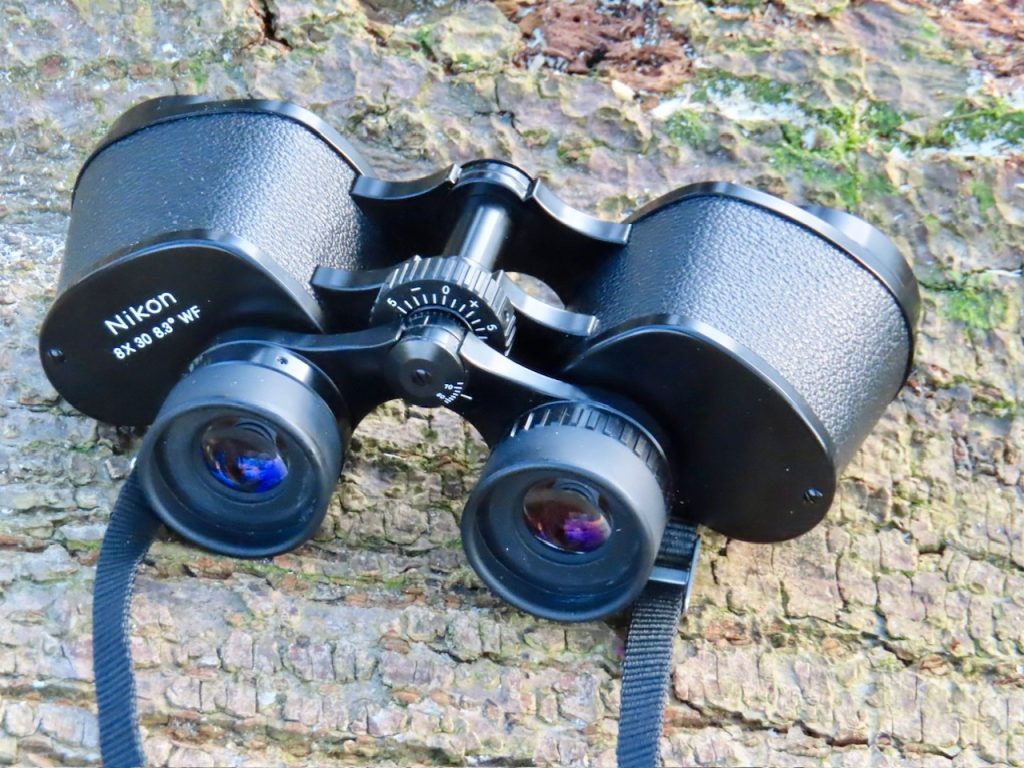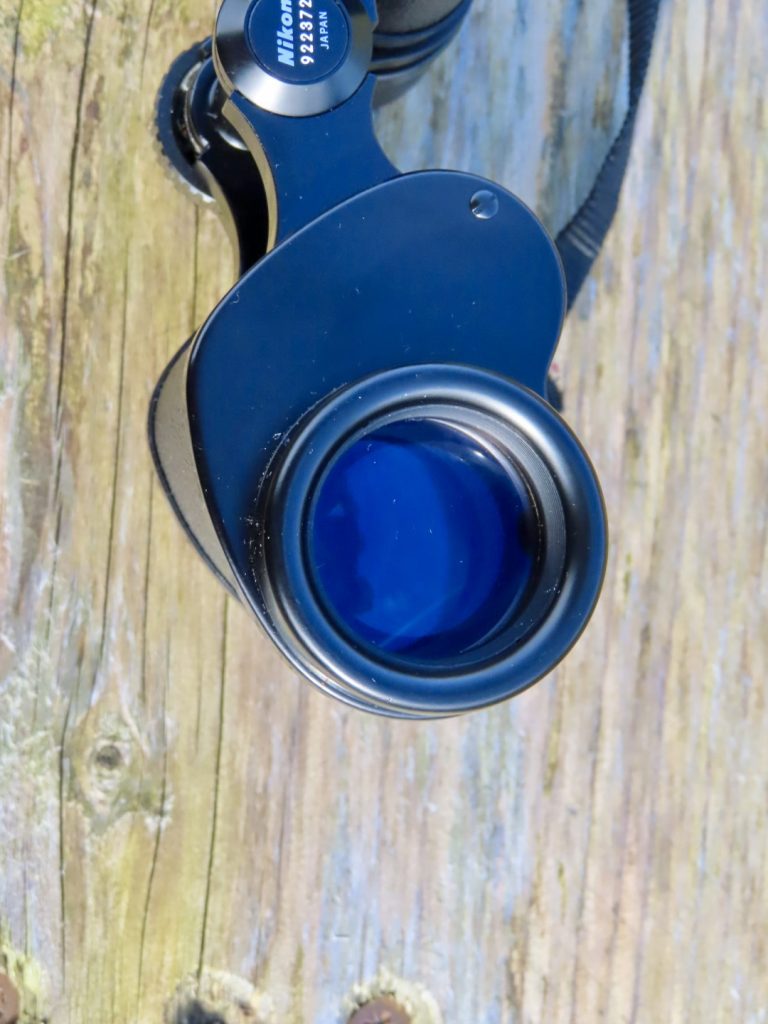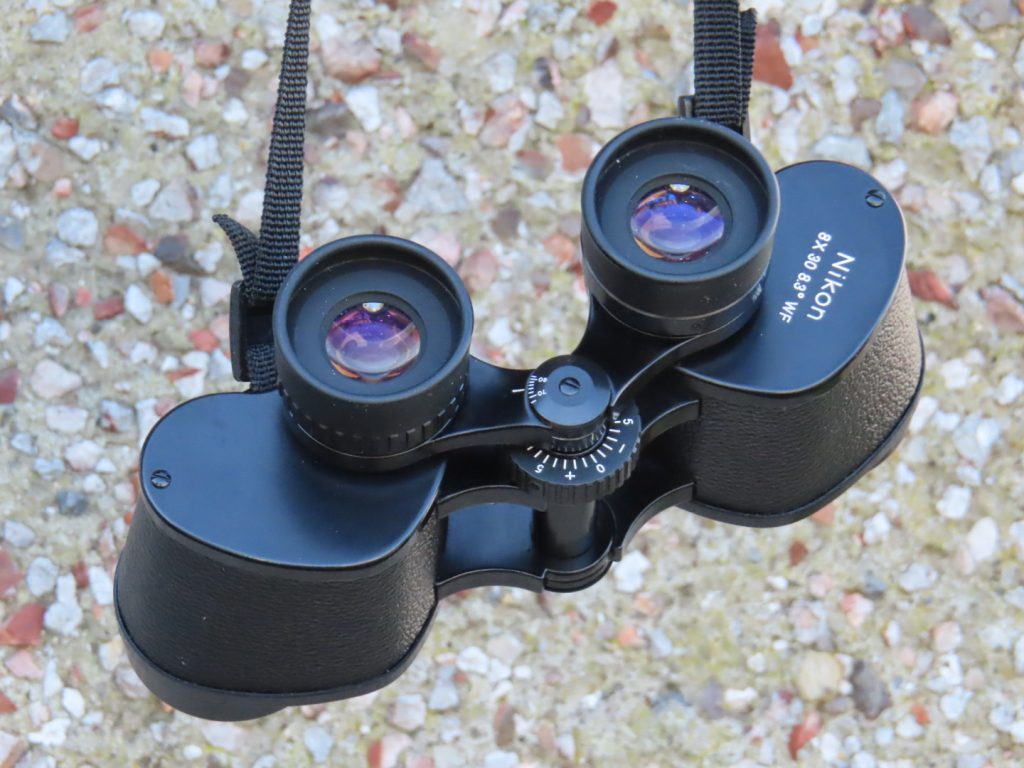
A Work Commenced April 6 2025
Want a really great binocular that exudes class and pedigree? A binocular that delivers in spades optically but won’t break the bank? Then look no further than this late model Nikon E 8 x 30!

I picked this up from EBay for about £150 plus import duties from Japan, so about £200 all in. It’s in absolutely mint condition despite being about 40 years old based on its late serial number(#922372). Indeed, when I examined the original receipts I got with the instrument, I could see that it was originally made in 1985:

These models had an advanced single coating on all glass surfaces including the prisms. The Model E was updated in the late 1980s to the Criterion model Es (discussed in my 2024 book, Choosing & Using Binoculars)which had full multi coatings. These are easy to distinguish from each other by the colour of the bloom of the ocular and objective lenses: the older Es having a purple tint while the newer Criterion models possessing a greenish bloom.

Mechanically, the Nikon E is beautifully built, in a robust magnesium alloy housing. Indeed, having tested it extensively on field trips, it is arguably true that the build quality of these classic E series was a little higher than the later Criterion and even the most recent EII incarnations.

My unit has a smooth focuser that exhibits a fair amount of friction. And while it’s harder to turn than the most recent EII model, it will likely last longer than the latter because the plastic is tougher than the softer synthetic rubber found on more recent models.
Optically, the Nikon E 8 x 30 sports a wide 8.3 degree true field- very large for its time and still very generous by today’s standards. The view is extremely comfortable and immersive – maybe a little more comfortable even than the venerable EII. It’s a very sharp optic with a great big sweet spot. Contrast is excellent with very good control of colour fringing. The outer field shows moderate pincushion distortion to minimise the dreaded rolling ball effect. Colour tone is ever so slightly yellowish which is not at all distracting to my eyes.Close focus is a very decent 2.5 metres.
I did pick up a few internal reflections aiming the binocular at some bright light sources after dark though, and on the Moon, but they were far less injurious than I had expected given its single coated specification. Performance against the light is also impressive.
Having compared it to a late model E. Leitz Binuxit 8 x 30, also in pristine condition, and dating from about 1960, it is clear to see the improvement in light transmission in the Nikon E. Coating technology had very clearly evolved for the better in that quarter of a century!

In short, I was very pleasantly surprised by this classic 8 x 30 from the Japanese optics giant. If you’re on a budget and want a piece of optical and mechanical excellence from yesteryear, but can still deliver beautifully clear and sharp views, I’d strongly recommend this model. It’s likely that the later model Es had better coatings than the earlier versions so be on the look out for units with serial numbers from the 700,000-950,000 range. I guarantee you’ll be impressed!
Read more about great modern classic glass in my book, Choosing & Using Binoculars: A Guide for Stargazers, Birders and Outdoor Enthusiasts.
Hi Neil,
I enjoy reading your articles, and I’ve already purchased a few binoculars based on your reviews. How does the Nikon 8×30 E compare optically to the Oberwerk 8×32 SE? I wear glasses. Are the eyecups on the Nikon foldable? And can I see the entire field of view while wearing glasses? Thank you for your response.
Hello,
The Nikon E 8 x 30 does have soft rubber eyecups that can fold down. Eye relief using glasses is very comfortable: you can engage with the entire field with the eyecups folded down. Optically it’s not quite as bright as the Oberwerk SE but it has better ergonomics and a noticeably wider field of view. I would give the nod optically to the Oberwerk but the Nikon is a far more convenient travel binocular with its significantly lower weight and smaller frame than the SE.
Hope that helps!
Neil
Thanks for this review! I’m a binocular neophyte and I stumbled across these in a used section and picked them up. They seem great to me! I also have a set with a late serial number and presumably the late single coatings But I really have no frame of reference! Since you seem to, I wanted to ask: How much do you think one would have to spend to buy new binoculars that exceed the optical quality of these? Just curious how far up the quality scale these are.
Hi Simon,
These days, with all the advances in technology we’ve all witnessed, I think you could get superior optics for under £200. I’m thinking of something like Svbony’s SA 205 8x 42 with better coatings, ED glass and a flat field. They are also weather sealed unlike the Nikon Porros.
Regards,
Neil